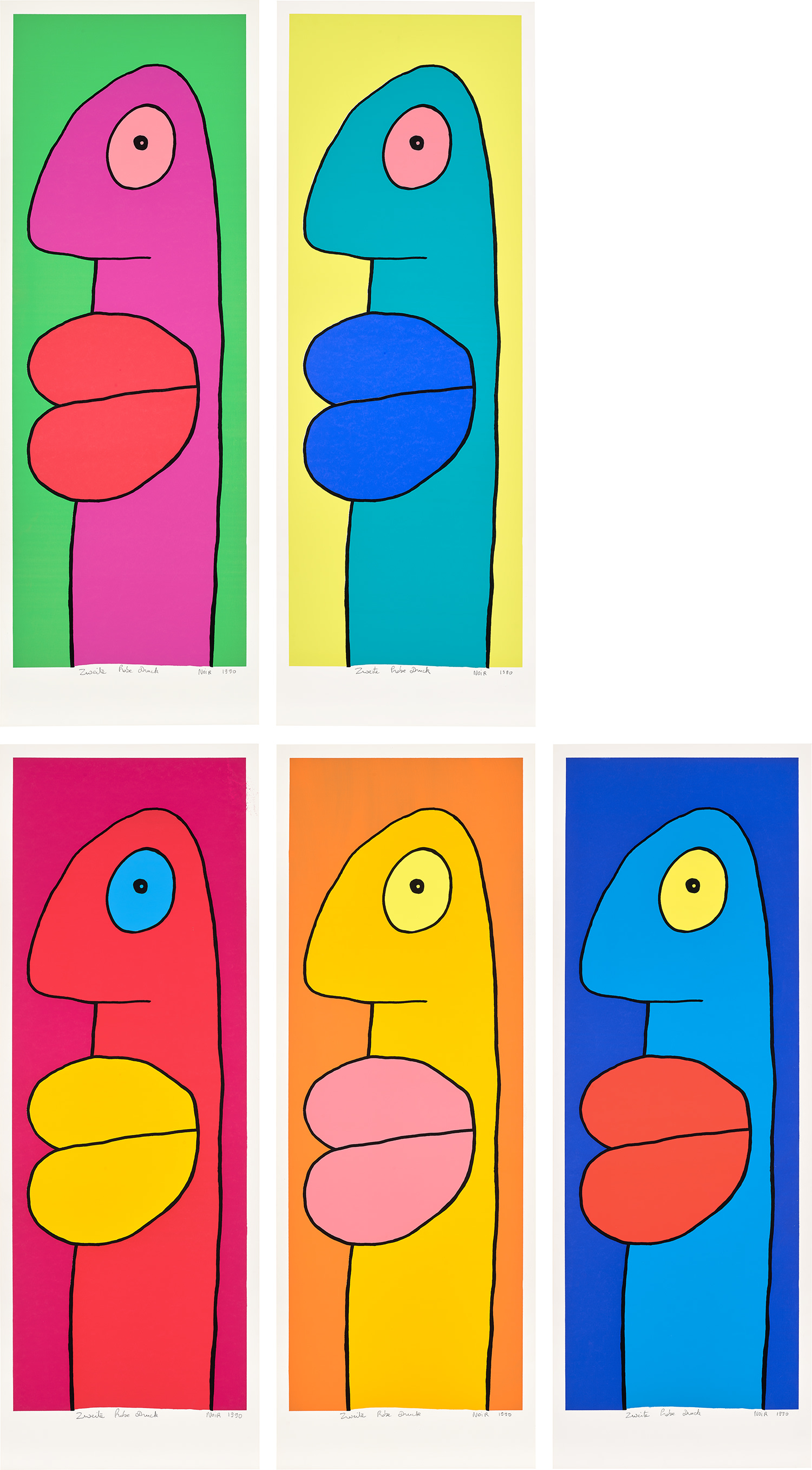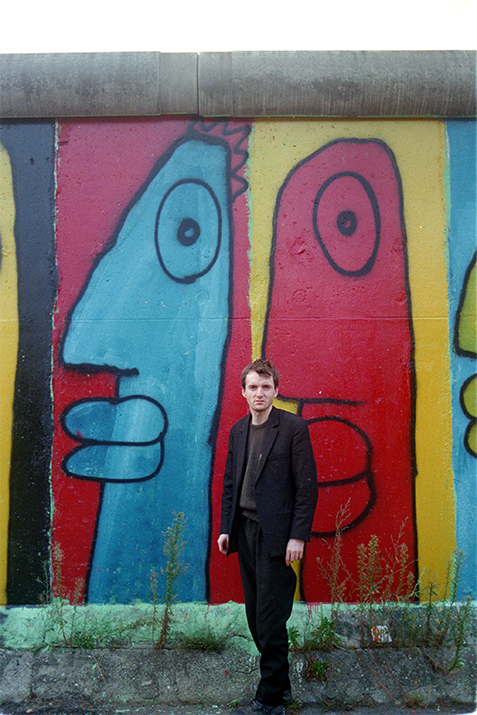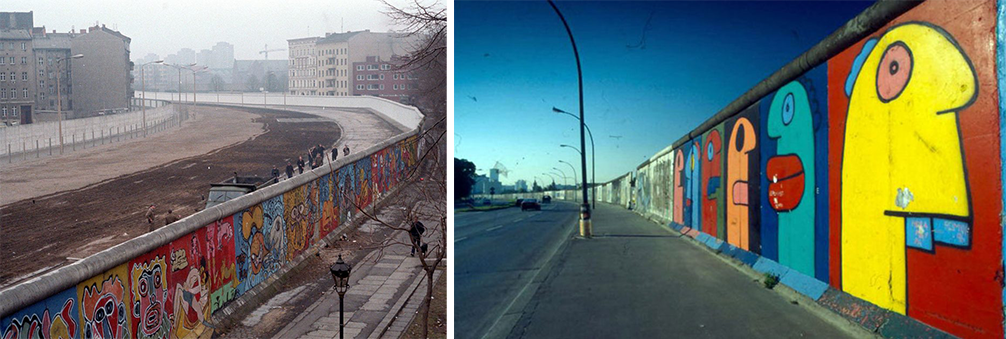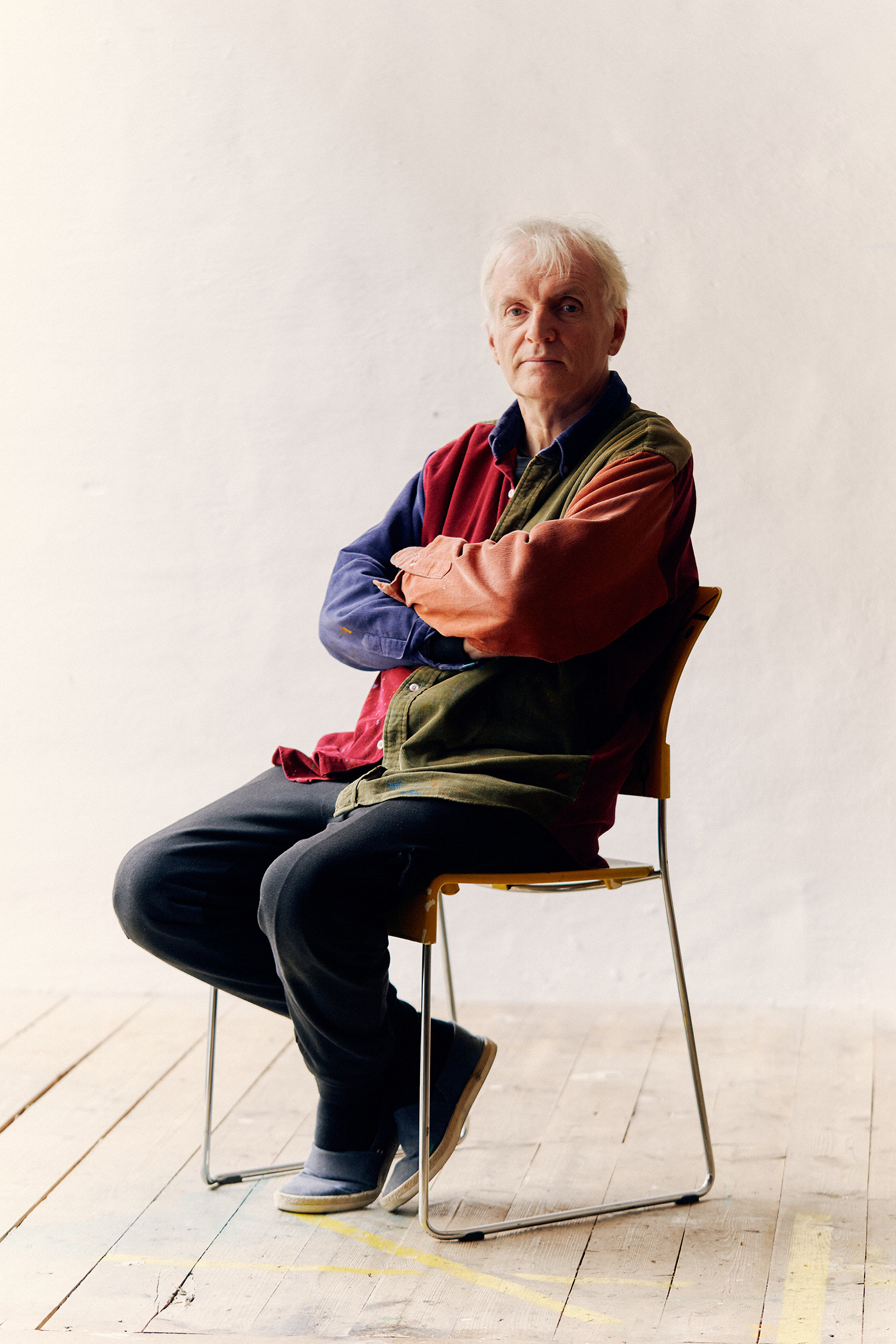

162
Thierry Noir
Heads
- Estimate
- £8,000 - 12,000♠
all S. approx. 140.4 x 50.2 cm (55 1/4 x 19 3/4 in.)
Further Details
“The Wall was the trigger that pushed me to paint and become an artist. Its presence was so oppressive that it forced me to react.”
—Thierry Noir
In April 1984, Thierry Noir became the first artist to paint on the Berlin Wall. Armed with bright colours, Noir’s objective was to perform a revolutionary act: to transform, ridicule, and ultimately help destroy the Berlin Wall. From 1984 until the Wall fell in 1989, Noir covered five kilometres of the concrete barrier with his art, creating bright and seemingly innocent works that challenged communist repression and, in the process, propelled his artwork to worldwide acclaim.
Constructed in 1961 at the height of the Cold War, the Berlin Wall stood as a uniform concrete mass over three metres high that physically divided the German capital, symbolising the opposing political ideologies between the Western Bloc and the USSR. Foreshadowed by Winston Churchill’s "Iron Curtain Speech" of 1946, this monumental and impassable barrier that divided Europe became a reality in the years following World War II, placing Berlin at the fulcrum of Cold War tensions.

Thierry Noir in front of his work at the Berlin Wall, 1986.
Image: Courtesy of the artist.
The Berlin Wall was constantly guarded by East-German soldiers and it was absolutely forbidden to paint on the wall. Trespassers were at risk of being arrested and there was a serious risk to personal safety. In order to complete his wall paintings as quickly as possible, Noir’s technique was to adopt "two ideas, three colours," resulting in a strong emphasis on line and the reduction of forms to their most basic elements. Thus, the simplicity of Noir’s cartoon-like creations, as is found in the present lot, Heads, was a result of the artist’s need to paint rapidly outdoors in a dangerous environment. Despite their vivid colours and playful appearance, Noir’s wall paintings left a haunting sense of melancholy: as Noir clarified, "I did nothing but react to its sadness." The monumental frescoes represented a personal response to the oppressive environment he found himself in. Subverting this symbol of separation, struggle, and division, Noir transformed the Wall into an emblem of hope.

Left: View from Thierry Noir’s window overlooking the Death Strip, 1986. Image: Courtesy of the artist.
Right: The East Side Gallery, Berlin, 1990s, photographer unknown.
The present portfolio of five screenprints in vibrant colours relates closely to Noir’s world-famous sequence of heads at the East Side Gallery, a 1.3km long stretch of surviving Berlin Wall located along the river Spree in Berlin. At this location during the Cold War, the border between East and West Berlin was the river Spree itself, along which border patrols were made by speedboat. The physical Wall had to be diverted to the east shore of the river, within the GDR’s territory. This meant that in November 1989, when the Wall was torn down, this long stretch of Wall survived as it was inaccessible to west Berliners. In March 1990 an initiative was launched whereby Thierry Noir and 117 other artists from 21 countries were invited to create artworks across this span of the Wall between Ostbahnhof and the Oberbaum Bridge. Considered as a symbol of Germany’s reunification and a national memorial, the East Side Gallery is one of Berlin’s most important public artworks and is also the longest surviving stretch of Berlin Wall in existence. Noir’s series of characteristic heads – along with works such as Dmitri Vrubel’s Bruderkuss – are among the most iconic murals at the East Side Gallery and have themselves become emblematic of modern-day Berlin’s visual identity.
Phillips is delighted to be offering the complete Heads portfolio to the market for the first time. A trial proof set executed in 1990, shortly after the Berlin Wall was toppled, Heads poignantly embodies the powerful notions of freedom that underpin Noir’s work. This series of prints is a testament to the artist’s long-standing relationship with the Berlin Wall and exemplifies his status as one of the most renowned political artist of the late twentieth and early twenty-first centuries.

Thierry Noir, Berlin, 2023. Image: Alex Killian, Courtesy of the artist.